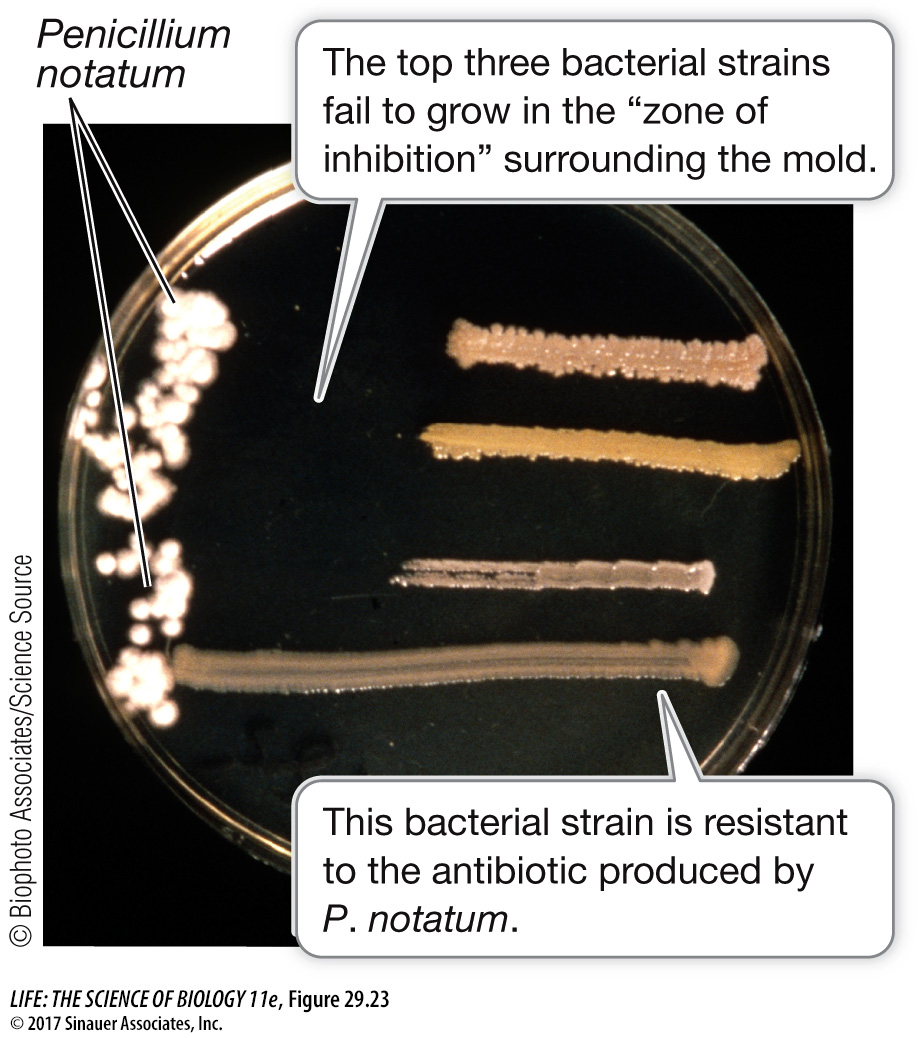Investigating Life
investigating life
How do fungi affect our daily lives?
Beginning in the 1940s, antibiotics derived from fungi ushered in a “golden age” of freedom from bacterial infections. Today, however, many of these antibiotics are losing their effectiveness as pathogenic bacteria evolve resistance to them (Figure 29.23).

Most medical antibiotics are chemically modified forms of substances that are found naturally in fungi and other organisms. Fungi naturally produce antibiotic compounds to defend themselves against bacterial growth and to reduce competition from bacteria for nutritional resources. These naturally occurring compounds are usually chemically modified to increase their stability, improve their effectiveness, and facilitate synthetic production. From the late 1950s to the late 1990s, no new major classes of antibiotics were discovered. In recent years, however, three new classes of antibiotics have been synthesized based on information learned from naturally occurring, fungally derived antibiotics, leading to improved treatment of some formerly resistant strains of bacteria.
In addition to uses in human health, fungi are critical for production of human food and drink, as well as in agricultural applications. Fungi (especially yeasts) are important model organisms in biological research. Fungi are also sensitive indicators of environmental contamination, and long-
Future directions
Biologists are developing applications to use fungi to combat non-